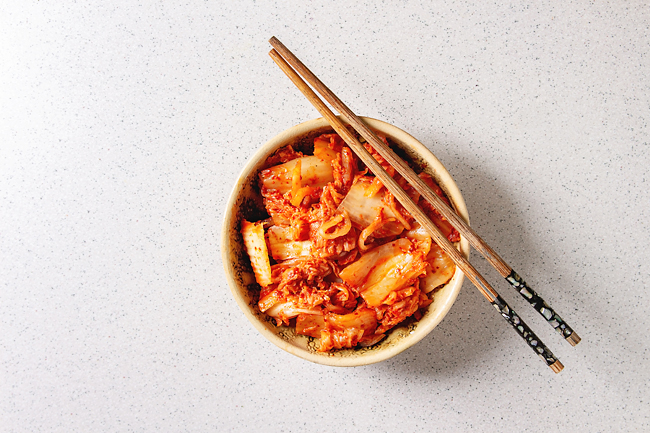ANN/THE STAR – While the ideals of “farm to table” dining and utilising fresh, organic ingredients are commendable culinary pursuits, it’s equally important to embrace the presence of fermented foods on our dining tables.
The resurgence of interest in food fermentation in recent years is evident, with health-focused eateries promoting the benefits of beverages like kombucha and ingredients such as fermented beans. Additionally, fermentation workshops are now being offered for those keen on exploring this traditional culinary practice.
That’s because the fermentation process generates probiotics which are good for gut health, besides being a form of food preservation. Here’s a look at some of the more familiar fermented foods:
YOGHURT
Dairy but not quite dairy, yogurt is essentially fermented milk. While normal dairy products may trigger some allergies, yoghurt contains lactic acid bacteria and is high in nutrients such as calcium, potassium, phosphorus, riboflavin and vitamin B12.
It is said that consuming yoghurt regularly not only boosts bone and teeth health, but also reduces digestive problems.



MISO
Commonly found in Japanese cuisine, miso is obtained from fermenting soybeans with salt and koji (a type of fungus). Used as a form of seasoning in Japanese food, miso is usually found in paste form and cooked in soup, but it is also good as a marinade or salad dressing. Studies indicate that there could be health benefits such as lower risk of stroke and blood pressure. It is also a preferred seasoning compared to table salt.
NATTO
Another Japanese ingredient made with fermented soyabean, this is usually combined with other condiments such as soy sauce and scallion, or even eaten on its own. Some people eat this for breakfast as a side dish to go with porridge.
It has a deep flavour that some liken to rotten cheese, and is an acquired taste as the gooey beans can be quite slimy and the texture quite hard to stomach. Teeming with microbiota that’s great for the gut and immune system, it is rich in antibodies and vitamin C, and minerals such as manganese, zinc and selenium.
KIMCHI
A traditional Korean staple usually made with cabbage, there are also many other versions such as radish, cucumber and scallion kimchi. Said to be good for lowering cholesterol and blood sugar, kimchi can be traced back to as early as the 7th Century in Korean cuisine.
The best part is, there are so many ways to enjoy this fermented dish – it can be eaten on its own as a side dish, cooked in a number of ways in soup, pancake, fried rice, noodles and even sandwiches, or added to rice bowls to elevate the flavour.
KOMBUCHA
A fermented tea that’s tart and gets fizzier with time, kombucha comes from green or black tea that’s been left to ferment with a starter – symbiotic culture of bacteria and yeast (scoby). It starts off as a sweet tea and slowly changes its composition as the lactic acid bacteria, acetic acid bacteria and yeast contained within do their work. A second fermentation with fruits flavours the tea pleasantly and makes it tastier. Kombucha is said to be beneficial for the liver and those prone to urinary tract infection, besides various other claimed benefits.
TEMPEH
Made by adding a starter (live mould) to soyabean, you get a dense “cake” that’s firm enough to hold in hand and cut, almost like tofu but a lot firmer. Commonly eaten in Brunei, Indonesia and Malaysia, these days the Western world is warming up to the goodness of tempeh as well. Rich in probiotics and protein, it is sometimes used as a “meat” substitute in vegan meals.
There are many ways to consume tempeh, but the most popular way would be fried with anchovies, peanuts and sambal, delicious when eaten with rice.
SOURDOUGH
It may seem like a new trend as there are so many sourdough pastries in the market today, from the traditional sourdough bread to sourdough doughnut, croissant and even sourdough batter.
However, sourdough bread is probably one of the oldest fermented foods around, literally centuries old!
Made by fermenting dough with lactic acid bacteria and yeast culture, sourdough bread usually has a mild sour aftertaste. Generally easier to digest, it is richer in nutrients and contains less gluten compared to ordinary bread.
APPLE CIDER VINEGAR
Touted to be a remedy for numerous ailments and a gold mine of health benefits, fermented apple cider contains probiotics and certain types of acids like acetic acid which supports the function of probiotics and prebiotics in the gut.
Fitness fans advocate taking a tablespoon of apple cider vinegar daily for health. Other ways of enjoying this drink include diluting it with water, mixing it with tea, as a salad dressing, or as a shot together with turmeric and honey. – Patsy Kam







